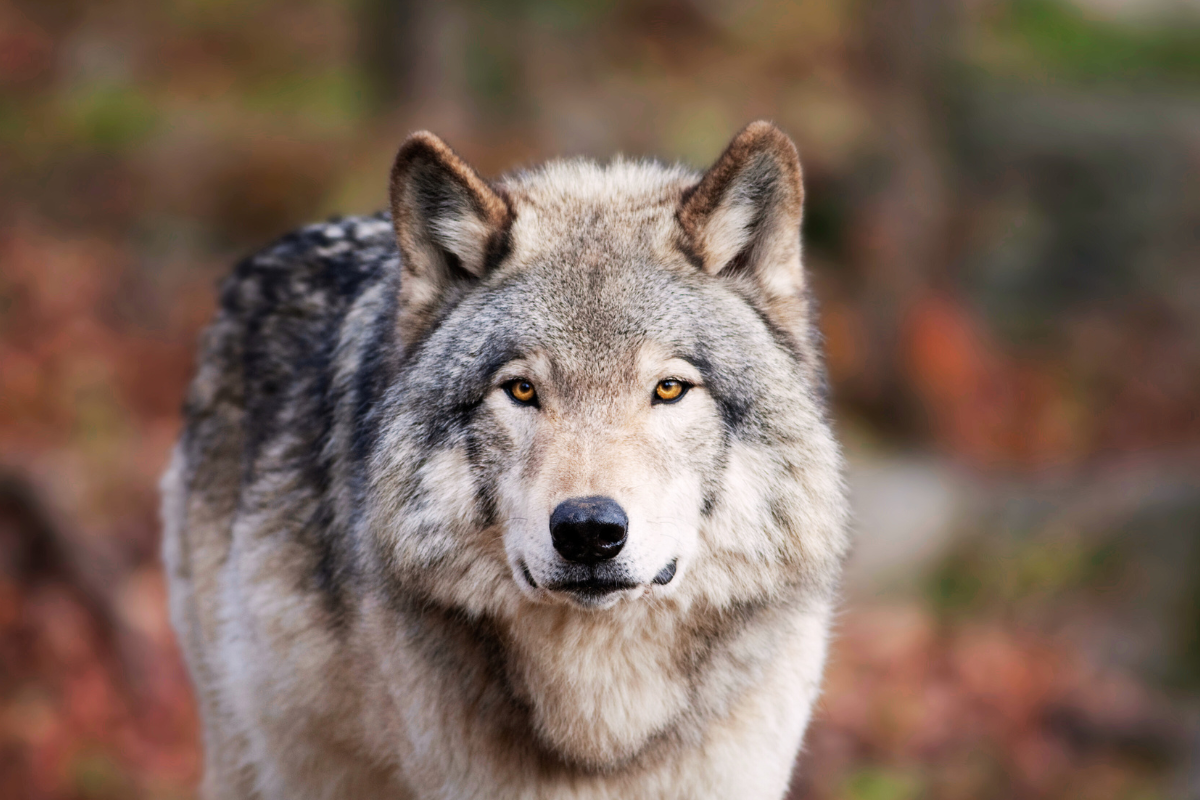By Scott Smith
More than 75 years after they were wiped out by hunters and trappers, gray wolves are returning to their native home in Colorado. That’s because on Nov. 3, 2020, voters approved Proposition 114 to reintroduce gray wolves to the state. However, we must make sure Colorado’s wolves are not brought back just to be exploited by the same bloodthirsty special-interest groups that hunted them to extinction once before.
Colorado Parks and Wildlife, which was tasked with developing a wolf reintroduction plan that will begin no later than Dec. 31, 2023, released its draft management plan in December. CPW, which receives 53% of its funding from selling licenses to hunters and trappers, appears set on an approach that is of great concern to Friends of Animals.
“We will not tolerate any form of wolf control in Colorado. We don’t want them brought back just to be persecuted. It’s alarming that CPW is already talking about killing wolves before they have one paw back on the ground in Colorado,” said Priscilla Feral, president of Friends of Animals.
The draft plan, which the Parks & Wildlife Commission was poised to finalize in May, includes the goal of capturing 10 to 15 wild wolves annually from several different families in other states over the course of three to five years. Initial release sites center on the Western Slope of the Rocky Mountains, between Denver and Grand Junction. The area includes large swaths of national forest as well as state and private land.
FoA’s Colorado-based Wildlife Law Program, identified three areas of concern with the draft plan when it submitted comments to CPW in February:
Hunting
The draft restoration plan hungrily eyes the possibility of recreational killing of wolves when the population reaches 150 for two years in a row. Giving license to trophy hunters to kill wolves would thwart the stated will of the voters. In fact, there is a section in the statute that explicitly prevents cash generated from the sale of hunting licenses and associated federal grants from being available for administering the reintroduction of wolves.
Needless killing to mitigate livestock depredation.
Wolves do not represent a serious threat to livestock. Period. Norm Bishop, a former park ranger at Yellowstone National Park, cites a study conducted 20 years after wolves were reintroduced to Yellowstone. In counties bordering the park that had both cattle and wolves, the loss represented 0.01% of cattle, or approximately one out of every 10,000 cows. “The draft restoration plan encourages needless killing of wolves when livestock owners already receive full market value for lost livestock,” said FoA staff attorney Adam Kreger.
Not enough wolves
The science shows that the Rocky Mountains bisecting Colorado can support 1,000 wolves or more. However the draft management plan wants to keep the wolf population constantly hovering around 150, which is not sufficient for a successful, self-sustaining population, a quality which is required by law. Even the U.S. Fish & Wildlife has concluded that a minimum population of 300 must be reached in order to maintain long-term viability.
Who wolves are: eco-warriors
Protection of gray wolves in the Northern Rocky Mountains is critical to ensure their own survival and to enhance the environment in which they live. As top predators and keystone species, wolves play a unique role in regulating and preserving their ecosystem, especially regarding human-caused threats like climate change.
The return of wolves to Colorado comes at a time when the animals are in great peril in other Rocky Mountain states since they we delisted from Endangered Species Act protections. Wyoming permits unlimited wolf hunting across 85% of the state. In Montana, where the wolf population is estimated at just over 1,100, 329 wolves were killed in 2021, and 190 more in 2022.
Idaho is also on a wolf-killing spree, with the wolf population decreasing there for the first time in years—by more than 200 in 2022.
The revenue that CPW might be relishing to take in from selling hunting licenses pales in comparison to the environmental and economic benefits that will come with the return of wolves to the state. A study of Yellowstone National Park visitors estimated that out-of-state wildlife watchers coming to the park specifically to see or hear wolves spent $35.5 million annually in the three states surrounding the park. This compares to the measly $400,000 or so a year Montana expects to generate from selling licenses to wolf hunters.
But the truth is wolves are invaluable whether people are coming to see them or not.
In answer to the age-old question about how many wolves humans should tolerate anywhere, wolf scientist Gordon Haber advised, “The optimum number of wolves is best reached and maintained by the wolves and prey themselves. Claims that wolves destroy the very food source upon which they depend are absurd…there is no reason for us to think we must control a wolf population.”
The best reason to return wolves to Colorado is to protect their lives, interests and communities.
Like wolves, Haber said, “We humans accomplish things only in community.”

